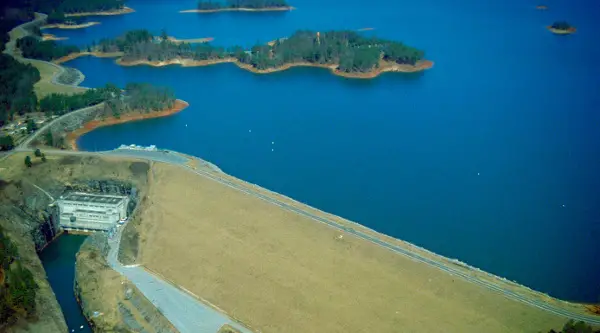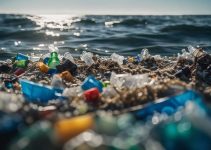One of the most controversial issue our world faces today is the problem of utilization of water resources. It is an evident fact that water is one of the resources vital to human existence and has resulted to water wars. Countries along the Nile River particularly Egypt fight for control over the Nile River where 90 million of its people live . Further, water is susceptible to degradation and depletion.
Although almost two-thirds of the world’s surface is made up of water, only a small portion of this constitutes sources of potable water. At the onset of rapid urbanization and development, the proper management and distribution of water for varied uses becomes an immediate center of attention. This concern has caused different entities and groups to examine the present condition and to prescribe ways for management of some of the biggest water systems in the Philippines.
Small-scale water wars
People derive different uses from water sources. These uses include water for domestic use, irrigation, hydroelectric power generation and flood control systems.
Communities in the Philippines obtained their water supply from different sources such as rainfall, surface water resources, rivers, lakes, reservoirs, and underground resources (Greenpeace, 2007). Some of the major water basins and water systems in the country include the Angat Reservoir, Laguna Lake, and Batangas City groundwater system.
However, events in the past and our condition provides a different image of water resource use in the country. Various governmental agencies currently share the magnitude of the work involved in gathering information and monitoring the water supply services in the country. These organizations include the Local Water Utilities Administration (LWUA), Department of Interior and Local Government (DILG), Philippine Statistics Authority (PSA, formerly NSO) and the National Economic and Development Authority (NEDA), (NEDA, 2010).
An article written by Guillermo Tabios and Cristina David in 2002 specified the different issues and conflicts involved in the sustainable use of water resource in the some of the Philippines’ important water systems. In the 1970s, the country experienced the need to meet the increasing water demands of the consumers. The situation led to serious problems for planners and decision makers.
Provisions of the Republic Act 9275, otherwise known as the “Philippine Clean Water Act of 2004”, specified that trade-offs in water use may be imposed. However, the said provision is not efficiently carried in the entire country. The Department of Environment and Natural Resources is the lead agency that implements RA 9275. Previous reports and cases supporting the claim of weak implementation by the government were also evident (as stated in the case between Bulacan Farmers and the Metropolitan Waterworks and Sewerage System. Due to conflict of interests, changing the political landscape and weak justice system, resolution of cases that involves water use trade-offs are still being decided (as stated in the case between Bulacan farmers and MWSS).

Another aspect that needs to be considered in this issue of water use is the physical system and operation of water systems. Planners and decision makers must be well-equipped with the required knowledge to relate the functions of the respective water systems relevant to its effects on the nearby ecosystems, surrounding communities, and different stakeholders. This point was significantly noted in the instance of the construction of Mangahan Floodway in Metro Manila. The Floodway was constructed to safeguard Metro Manila from floods. The floodway, however, caused flooding in the surrounding communities in the Taguig and Taytay area. This event goes to show that careful planning, especially those involving the construction of structures, should be carefully planned since these might also affect other neighboring areas.
Saltwater intrusion is also one issue that needs to be addressed. We all know that potable water for domestic use needs to be free of substances that might increase its salinity. Due to excessive pumping, groundwater aquifers and systems become prone to saltwater intrusion. This situation results when freshwater pressure can no longer repel that of saltwater, leading to intrusion. This occurrence increases the salinity level of water beyond the treatable condition. When this happens, costly processes must be carried out to treat water for domestic use. Nevertheless, not all government agencies and private companies in the country can afford to employ such process.
Another issue is the worsening effect of pollution on our water supply. Much of our water resources are being exposed to chemical and toxic substances that may lead to worse environmental and health problems. Water pollution due to poor sanitation and untreated wastewater contributes significantly to the degrading quality of our existing water supply. Results showed that polluted water may cause several health problems such as gastroenteritis, diarrhea, typhoid, cholera, dysentery, hepatitis, and Severe Acute Respiratory Syndrome (PEM, 2003).
Possible recommendations to prevent water wars
Ultimately, a greater portion of responsibility lies with the agencies of the government that manage the utilization of water resources. To prevent water wars, responsible government agencies should work together. Though each organization has different stakeholders that they need to cater, it is still best that they harmonize their respective schemes and equitably share our existing water resources.
Efficient monitoring of water quality and supply should also be carried out regularly. The conduct of researches and studies is highly recommended. With the results of these studies, the government, including the planners and decision makers, will be provided with the proper basis that may be used to review our existing laws about water resources use.
All of us should realize that water is a finite and scarce resource. Such can only be attained if we work hand-in-hand to preserve these resources and prevent water wars.
References:
(1) David, C and Tabios, G. (2002). Competing Uses of Water: The Cases of Angat Reservoir, Laguna Lake and Groundwater systems of Batangas City and Cebu City. Philippine Institute for Development Studies. 20, (6).
(2) Philippines, National Economic and Development Authority. (2010). Philippine Water Supply Sector Roadmap, 2nd Edition. Pasig City, Philippines.
(3) Greenpeace-Southeast Asia. (2007). State of Water in the Philippines. Quezon City, Philippines.



sir good day, here in balcon maravilla jordan, guimaras a smallscale springwater conflict of ownership still unsolve. the sringwater claimed by lotowner and sell woithout permit. will you pls help us? thank you
robert pacardo
president
kasilingan water services
Dear Mr. Pacardo,
May I know the particular problem you have in your area and what sort of help you need from us? Please know that we are very much willing to extend any help to your community as long as it is within our capacity to do so.